The Best Hair Removal Creams Save Me Thousands on Lasers—and Keep My Skin Silky Smooth
Easy and effective.
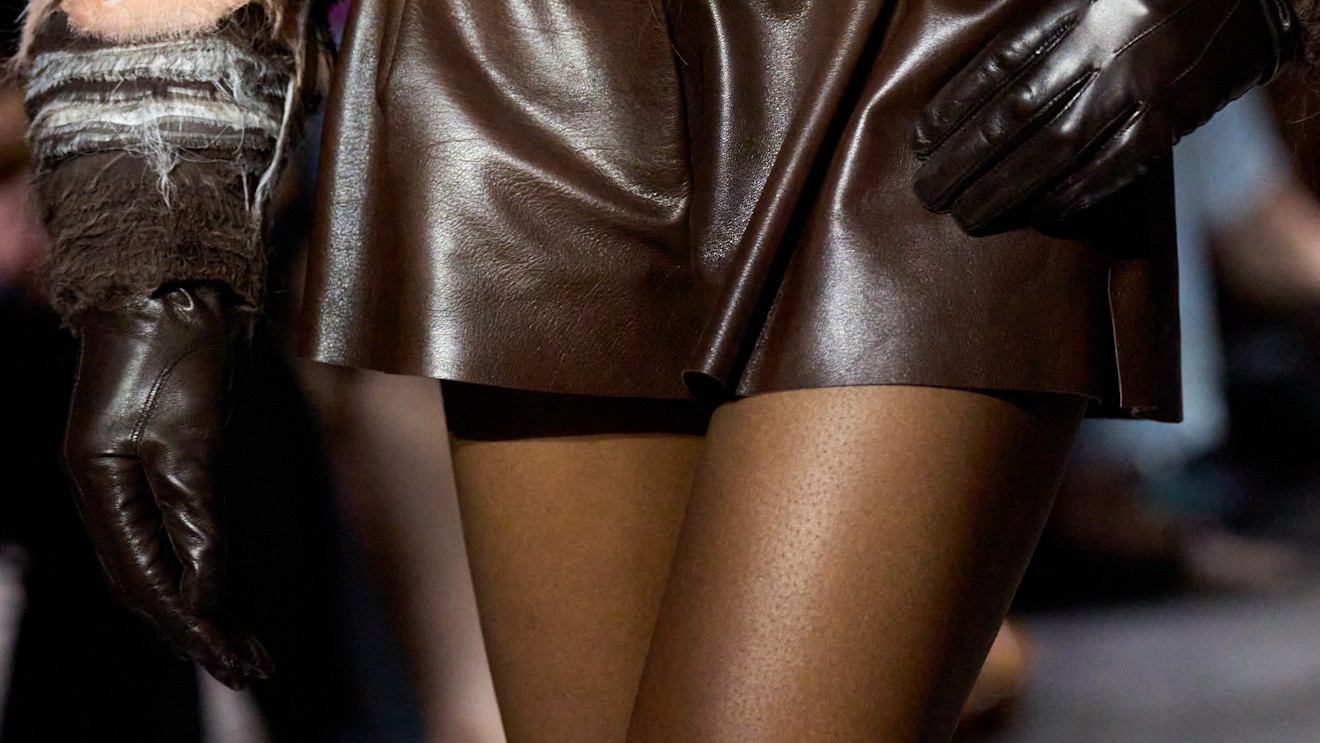

Julia Marzovilla
Hair removal can be a tricky, and often painful, process. Using a laser hair removal device at home comes with its own slew of precautions, not to mention expenses. And if you’ve already run through all of the best razors and wax strips at the drugstore, you might be feeling a little...stuck. Like you're in a hairy situation, perhaps? So, what about one of the best hair removal creams?
When you were an impressionable tween learning to shave and first heard about Nair, I'm sure you thought it was, conceptually, too good to be true. But it's really not! In fact, today's hair removal cream technology has come a long way. You can find so many different formulas and textures on the market, and they don't even smell (that) bad.
Here's how they work: "Hair 'removal' creams are designed to break down hair's keratin so the hair can be wiped away. The cream does not impact the follicle or future hair growth," explains Kerry E Yates, a trichologist and founder of Colour Collective. "Like waxing and shaving, after a certain time the hair will grow back, but it won't be thicker or darker after using depilatories."
All you have to do is smear it on, wipe it off, and go about your day hairless. Your tween self would be pleased to know it's as easy as that—though there are a couple of negatives (namely the smell) to take into consideration. Keep reading to learn all about our favorite hair removal creams, plus expert advice on how to use them while keeping skin and hair health top of mind.
The Best Hair Removal Creams
- The Best Hair Removal Cream Overall: Nair Hair Remover Shower Cream Sensitive Formula
- The Best Smelling Hair Removal Cream: Flamingo Body Hair Removal Cream
- The Best Luxury Hair Removal Cream: Wakse Meltoway Hair Dissolving Cream
- The Best Gentle Hair Removal Cream: Nad's Down Under Hair Removal Cream
- The Best Moisturizing Hair Removal Cream: Nair Body Cream Hair Remover
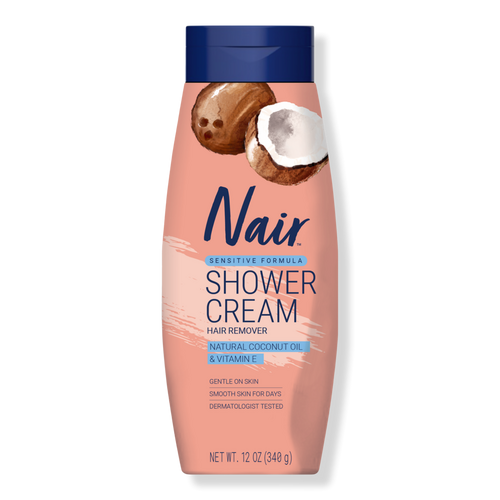
Nair, the icons you are! The famous hair removal brand boasts a number of genius products, including this shower cream, a leg mask, body cream (more on that in a second), and glide-on and spray-on formulas. Board-certified dermatologist Dr. Karan Lal, DO, FAAD uses (and loves!) this hair removal cream because it's filled with good-for-skin ingredients. "It has coconut oil so it’s moisturizing and won’t make your skin feel waxy after use," he says. Plus, the formula is both dye- and paraben-free.
Size: 12 oz.
Featured Ingredients: Coconut oil (moisturizing); Vitamin E (anti-inflammatory)
Dermatologist Tested?: Yes
What I Love: Expert-approved; Formula contains nourishing ingredients; Thick formula stays on in the shower so you can multitask
What I Don't: Scent is mellower than others, but still fairly strong; Can be irritating if left on too long
Review for MC: "It's such a treat to be able to smear this on and hop in the shower, knowing it'll do its job while I can...honestly forget about it until it's time to gently wipe it away. The smell is mellow, and I've never noticed burning, just smooth pits that I get to enjoy freshly out of the shower. It's almost like it never happened at all, which is exactly the experience I want for a hair removal cream. I'm sure you understand." — Sophia Vilensky, Contributing Beauty Writer

Contributing Beauty Writer Sophia Vilensky tests Nair's Sensitive Formula Shower Cream.
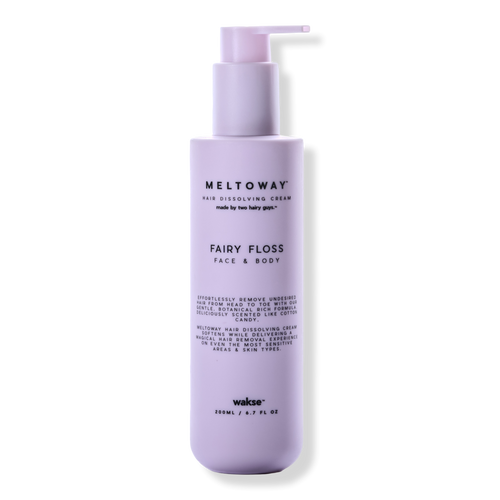
Wakse stepped onto the hair removal scene in 2018. That means they're way newer than, say, the legacy brand we were just talking about. But they've made their mark just the same. Meltoway, the brand's "sensorial" hair removal cream, has sold out at Ulta time and time again. It works for the face and the body and features fun scents like fairy floss, guava, and mango.
Size: 6.7 oz.
Featured Ingredients: Urea (attracts and retains moisture)
Dermatologist Tested?: Yes
What I Love: Pump bottle is extremely easy to use; Fun scent options; Skin is left soft
What I Don't: Not great for coarser hair; More expensive than other options
Review for MC: "This was the first hair removal cream I ever trusted after some bad drugstore experiences in my youth. (It wasn't their fault, just me trying to be a chemist before my time.) What really sold me on Meltoway was a review saying that 'if this scent were in a body cream, I'd be wearing it all day.' I never thought I'd hear that about a hair removal cream, and though this is extremely nice, I still wouldn't say it. But that's probably because I put it right under my nose. And even so, it was worth it—the hair all but disappeared, leaving me with the smoothest upper lip and just a bit of redness that quickly disappeared." — Sophia Vilensky, Contributing Beauty Writer
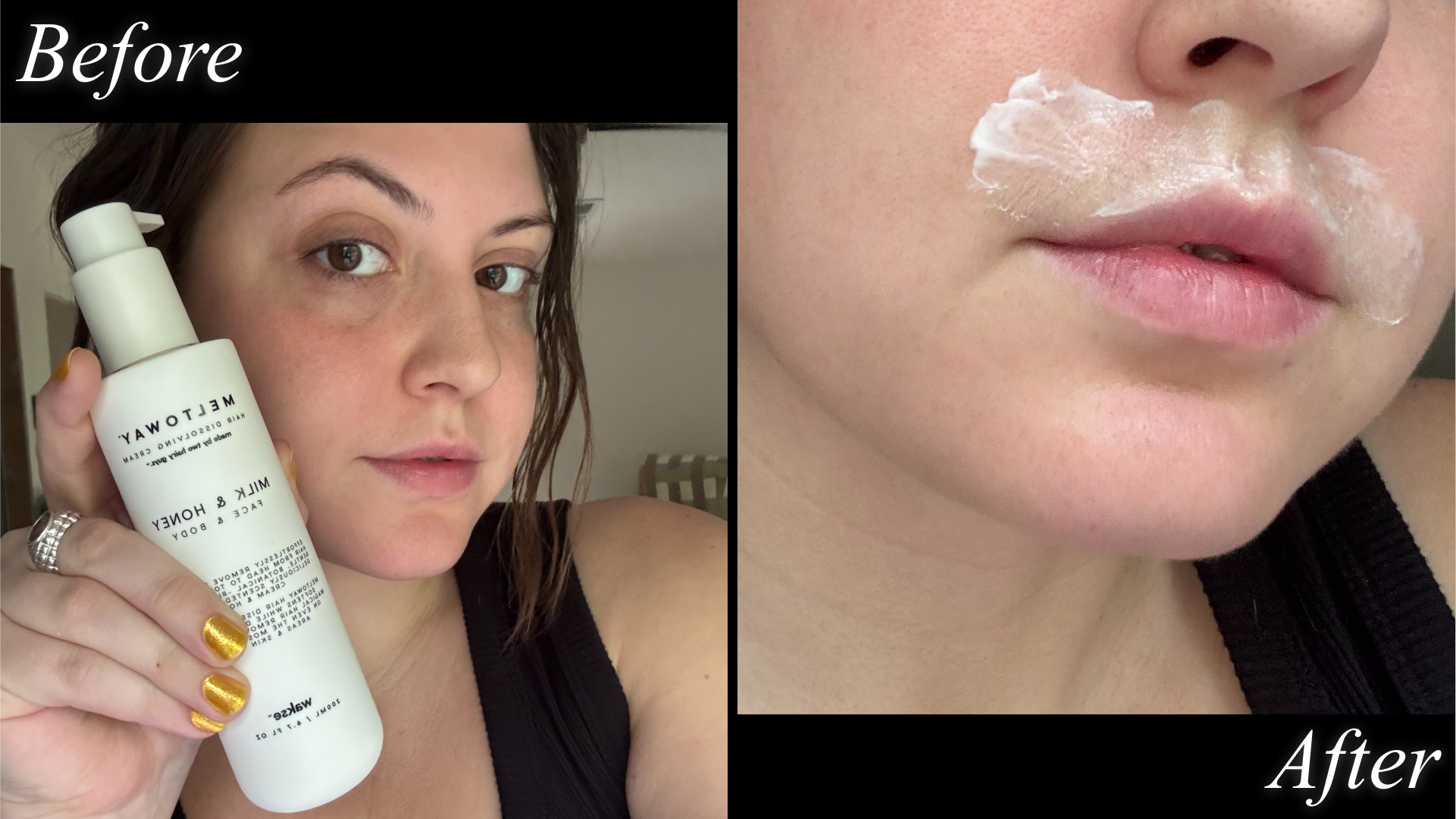
Contributing Beauty Writer Sophia Vilensky tests Wakse's Meltoway Hair Removal Cream.
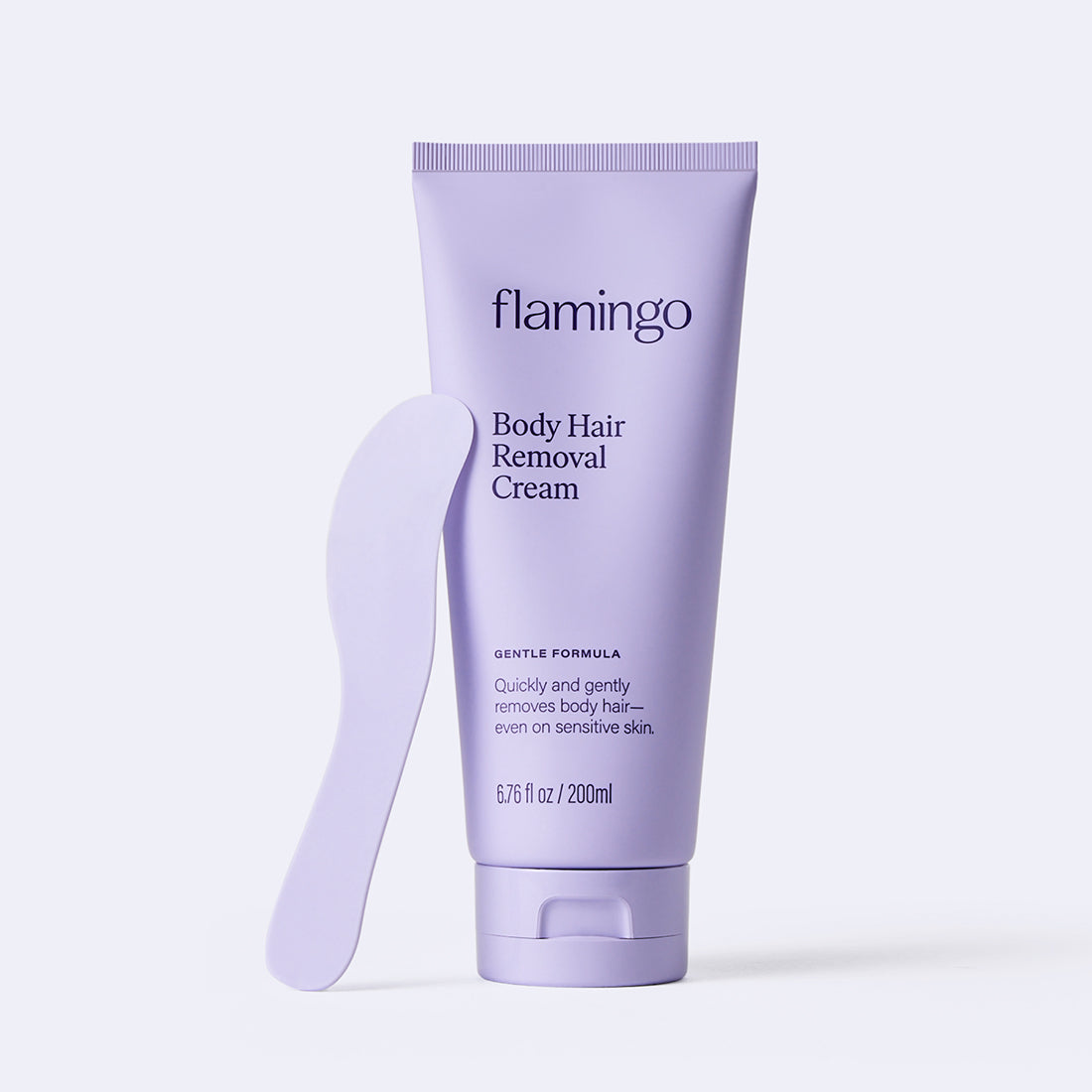
Soothing ingredients(that would be urea, bisabolol, and shea butter) and a subtle scent (iris and suede, yum) end up in this thick cream from superstar hair removal brand Flamingo. It goes on so smoothly with its included applicator and smells much more subtle than others of its kind. Easy instructions and a sleek, hairless finish? Check, check, check, check, check.
Size: 6.76 oz.
Featured Ingredients: Urea (attracts and retains moisture); Bisabolol (soothing); Shea butter (nourishing)
Dermatologist Tested?: Yes
What I Love: Includes a spatula for touch-free application; Subtle scent; Easy-to-follow instructions
What I Don't: Easy to go through the bottle quickly
Review for MC: "I’d be lying if I said depilatory creams were my preferred way to remove leg hair (I’m still haunted by the bottle I stole from my mom’s shower in 2009). But I’ll admit the formulas have come a long way. This one comes with a generously sized applicator that makes applying it way less challenging, and it leaves my skin just as smooth as shaving, without the post-use itchiness I definitely remember from back in the day." — Marisa Petrarca, Contributing Beauty Writer

Contributing Beauty Writer Marisa Petrarca tests Flamingo's Body Hair Removal Cream.
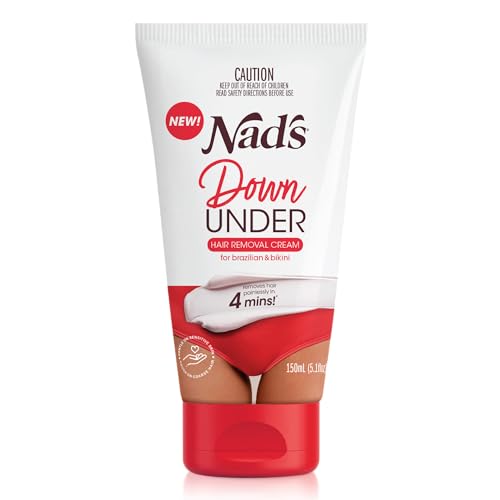
If you're in a pinch to remove unwanted hair, try this gentle hair removal cream from Nad's. It was designed to work in less than 10 minutes; you might even see results (which last up to one week) in only four. The thick formula is cruelty-free and suitable for all skin types, and the smell—though strong—is definitely tolerable.
Size: 5.1 oz.
Featured Ingredients: None listed
Dermatologist Tested?: No
What I Love: Doesn't cause irritation; Formula is cruelty-free; Suitable for all skin types, including sensitive
What I Don't: Strong smell
Review for MC: “I’ve had some scarring experiences with hair removal creams, in terms of both chemical burns and their off-putting scents. All this to say, Nad’s Down Under is legit. I used a pea-size amount on my underarms and after just five minutes, was left with polished pits thanks to a single swipe of a cold cloth. AND there was no nauseating lingering odor from Nad’s fool-proof formula. Nad’s is the product I didn’t know I needed that is now promised to my grooming routine.” — Malcia Greene, Contributing Beauty Writer
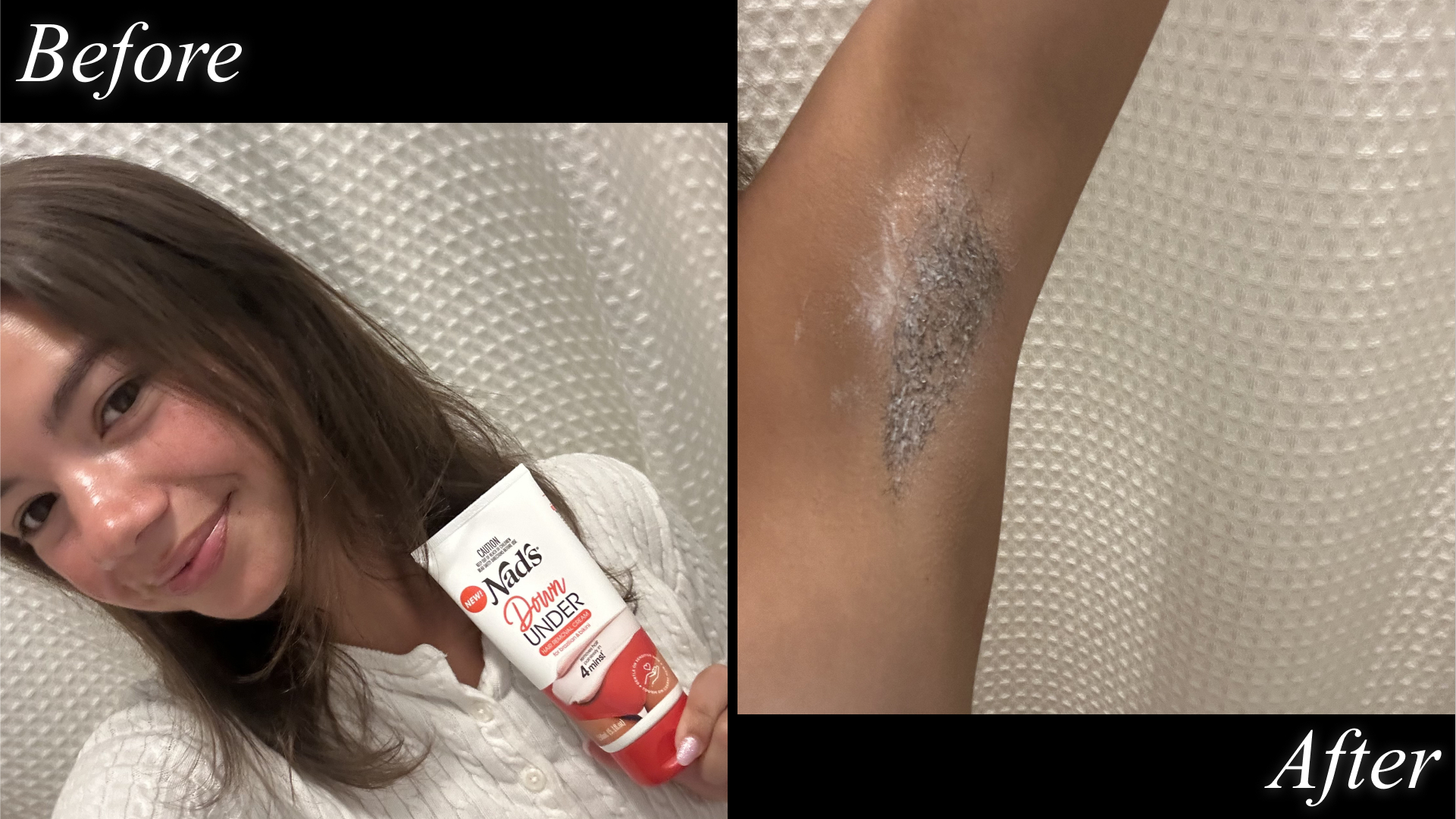
Contributing Beauty Writer Malcia Greene tests Nad's Down Under Hair Removal Cream.
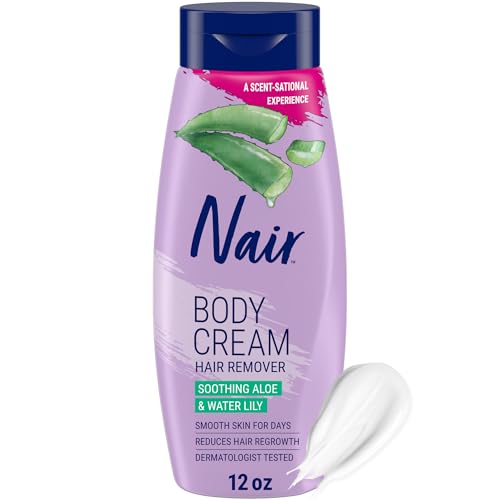
Introducing: a hair removing body cream?! As in...moisturizing body cream? It's crazy, but yes: Nair did that. If you're not in the mood to hop in the shower with their excellent shower cream, this is the Nair for you. You layer it on, leave it to do its job, and then wipe it off before rinsing with water. While chemical processing scents are hard to make disappear, it's nice to know you do have some options here. You can get this formula in Soothing Aloe and Water Lily, Cocoa Butter, and Oat Milk and Vanilla scents.
Size: 12 oz.
Featured Ingredients: Aloe vera (soothing and moisturizing)
Dermatologist Tested?: Yes
What I Love: Leaves skin feeling nice and soft; Works exactly as promised; Smells better than other options
What I Don't: Smell isn't amazing while it's working
Review for MC: "When I'm in a hurry and need bare legs but can't risk a patchy rushed shave job, this is what I'm going to be reaching for. As I've mentioned time and time again, I get super grossed out by the chemical-y scent of hair removal creams. And this one (this is a big compliment by the way)...wasn't that bad. More importantly, my skin was left feeling silky and hydrated and looking hairless." — Sophia Vilensky, Contributing Beauty Writer
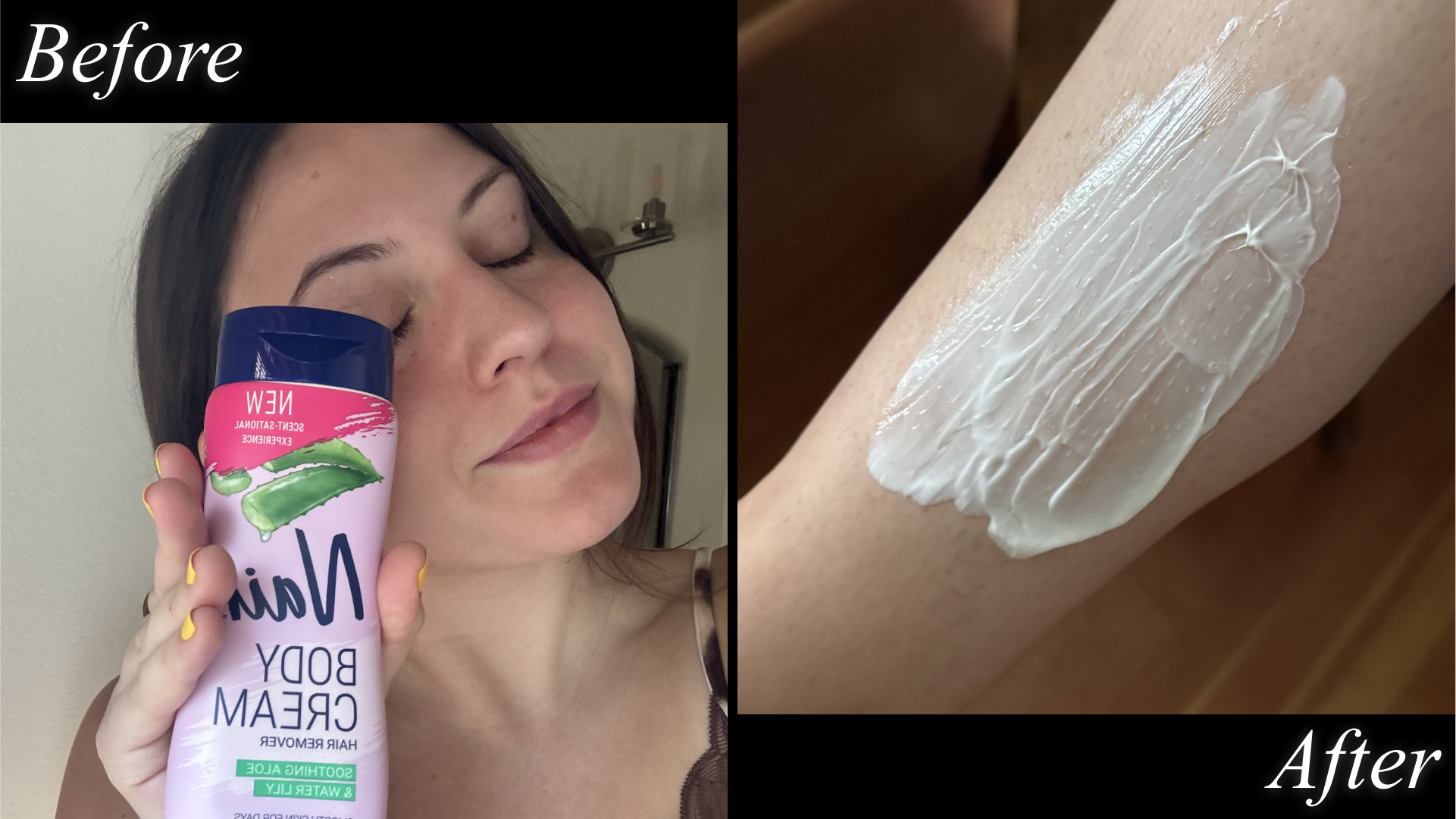
Contributing Beauty Writer Sophia Vilensky tests Nair's Body Cream Hair Remover.
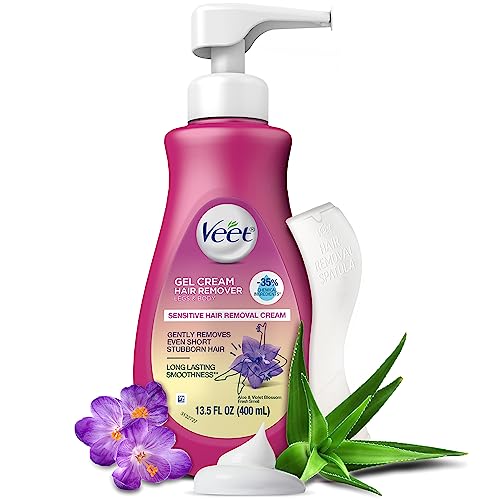
This longtime favorite hair removal cream from Veet comes in a bigger bottle than others on this list, so you know it will last a long time. While it's definitely gentle on the skin, it works best if you have longer hair on your desired areas rather than short stubble, so you’ll have to wait longer in between sessions. However, an even, thick, coat will remove even coarse hair. Plus, the pump dispenser makes it easy to apply with less mess.
Size: 13.5 oz
Featured Ingredients: Aloe vera (moisturizing); Shea butter (nourishing)
Dermatologist Tested?: Yes
What I Love: Time-tested; Good value; Scent isn't terribly strong; Pump bottle format makes application simple
What I Don't: Per usual, the smell isn't amazing
Customer Review: "I was hesitant to use this because I have sensitive skin, but it worked nicely! The hair came right off without any irritation and my legs feel extremely moisturized. After a shower, I couldn’t smell the scent anymore, it was very light. Test it on a small part of your body first though!" — Target

Imagine having to walk around in a sexy little swimsuit constantly. While being filmed!! That's life for those darling Love Island UK contestants (who we love so much). The good news is that they have this stuff in the villa. This hair removal cream leaves your skin baby soft and significantly less red than most. It also doesn't smell like rotten eggs (big win), is female-powered, and vegan.
Size: 3.4 oz
Featured Ingredients: Jojoba oil (moisturizing and anti-inflammatory); Aloe vera (soothing)
Dermatologist Tested?: Yes
What I Love: Has a vegan formula; Cruelty-free; Contains soothing ingredients; Islander-approved
What I Don't: More expensive than other options
Customer Review: "Very effective on lightly colored hair. Darker hair is a bit more stubborn. I do find that I have to leave the product on for the max time of six minutes. The scent is far more pleasant than other brands. Leaves my skin feeling smooth and soft." — Amazon
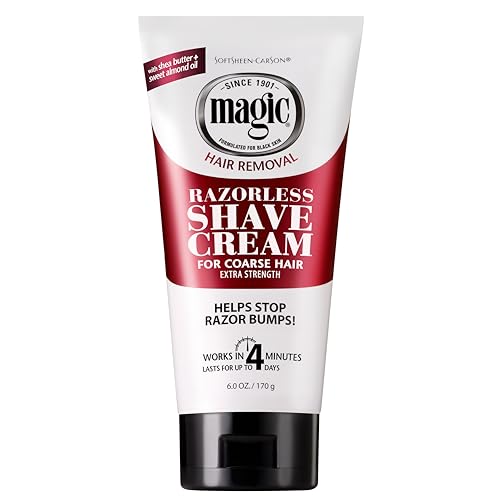
This cult-favorite (and top-rated!) hair removal cream was technically designed for men, which means that it works great on thicker, coarser hair. One thing to remember: it should be applied when your skin is dry and then rinsed off with warm water and a washcloth, so you'll have to plan ahead and apply this before you jump in the shower.
Size: 6 oz.
Featured Ingredients: None listed
Dermatologist Tested?: No
What I Love: Works quickly; Cult favorite; Affordable
What I Don't: Might be too harsh for sensitive skin; Packaging isn't as cute as other options
Customer Review: "Used it, it's amazing. Leave it for about five to ten minutes and works like a charm. Smooth skin never felt so good. Use water to wash off and don't be alarmed by the cool minty feeling, that means it's working. Doesn't feel uncomfortable at all, just a little chilly." — Amazon
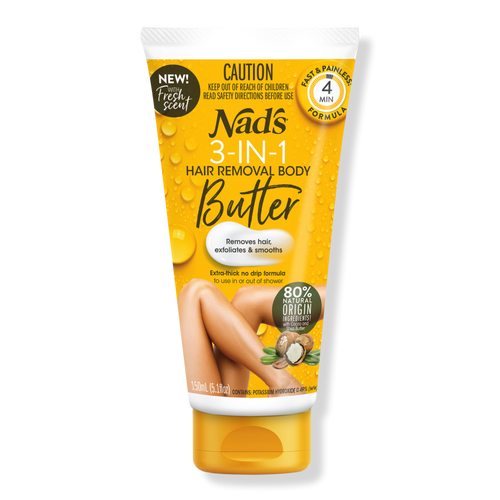
This body butter/hair removal cream hybrid from Nad's is great if you’re looking to soothe your dry winter skin as you remove any unwanted hair. The brand says that you can use it both in and out of the shower as a 3-in-1 hair remover/exfoliator/moisturizer. The hydrating formula is hypoallergenic and includes both cocoa butter and shea butter to keep your skin feeling its best. If you're using it in the shower, make sure to apply the butter a few minutes prior to getting wet for the best results.
Size: 5.1 oz
Featured Ingredients: Cocoa and shea butters (soothing)
Dermatologist Tested?: Yes
What I Love: Formula is cruelty-free; Good for sensitive skin; Can be used in or out of the shower; Thick formula that doesn't drip
What I Don't: Has a strong smell (but don't they all)
Customer Review: "I'll start off "negative" first and then go positive (don't worry it really wasn't bad). I just definitely had to do a whole ten minutes, and I feel my hair isn't that thick or coarse, but I assume I'd have to anyways. You definitely have to use A LOT, so there won't be many uses out of the bottle. But I didn't have any reactions, my legs feel smooth, and I'm pleased with the results!" — Ulta
How to Use Hair Removal Creams
- Perform a Test Strip: "I don’t necessarily recommend chemical depilatories," says board-certified dermatologist Dr. Jodi LoGerfo, DNP, APRN, FNP-BC. "But if someone would like to use it, I usually recommend doing a test site first to be sure they can tolerate it." A day or two before your hair removal plans, apply a tiny bit of your chosen cream to a small area of your body to make sure there's no adverse reaction.
- Apply The Cream To The Rest Of Your Desired Area: If the test strip doesn’t cause any irritation, it’s time to apply the cream for real. "When you are ready to treat the full area, apply the chemical depilatory to skin that is clean and dry. Do not apply anything prior to the hair removal cream as that can alter the depilatory’s effectiveness," Dr. LoGerfo explains. "Follow the directions exactly! Apply a thick layer of the cream, evenly over the desired area. Only leave on for the recommended time."
- Remove The Cream: Using a microfiber towel or soft washcloth will help you gently remove the cream—and all that hair along with it. To get the best results, move the towel in the opposite direction of hair growth.
- Rinse The Area and Moisturize: "Afterward, rinse thoroughly with lukewarm to cool water—make sure you wipe it off and rinse it off completely," says Dr. LoGerfo. "Apply a plain, gentle, soothing moisturizer immediately after to help the skin barrier recover. Avoid any products post-treatment that could potentially be aggravating to the area. This includes alcohol, fragrance or any acids like vitamin C, retinoids, AHAs, etc."
- Wait For Next Time: Dr. Lal also says that you should wait three weeks between hair removal cream applications.
How Do Hair Removal Creams Work?
Unlike razors, epilators, or waxing kits, hair removal or depilatory creams offer a relatively painless way to remove hair in the comfort of your own bathroom. They contain chemicals that break down the tight bonds in our hair proteins, causing the hair to break off.
"Chemical depilatories are usually made as creams, or lotions, and can be used for the body, or the face. These products disturb the disulfide bonds inside the keratin of the hair and remove the hair (although it is temporary)," explains Dr. LoGerfo. "Chemical depilatories are super easy to use and there is no pain involved (except sometimes there is burning or itching—if so wash off and do not use). They tend to have slower regrowth than shaving the hair off and when the hair grows back it tends to be softer."
The downside? Most chemical depilatories have "nasty odors" thanks to the chemicals at work. They can also be less effective when the hair is very coarse.
P.S.—It’s critical to understand the differences between hair removal methods. Classic razors remove hair by cutting it off as close to the skin as possible; wax strips pull out strands by ripping them from the follicle. For more information, check out Marie Claire’s guides on how to use wax strips, as well as our guides on how to shave your legs and how to shave your bikini line.
Should I Use a Hair Removal Cream?
If shaving or waxing works well for you and for your hair removal needs, great! Dr. Lal says hair removal creams can be a good alternative to either option, though, especially if you’re someone who gets razor bumps. Creams are also good for anyone whose skin is too sensitive for waxing or if you’ve “had skin tearing or ripping” during that process.
"All products have the potential to cause irritation in those who are sensitive. You should avoid hair depilatories/hair removal creams if you are allergic or sensitive to any of the ingredients," adds Dr. LoGerfo. "You should also avoid it if you have any active acne breakouts, skin infections, psoriasis, eczema with oozing or crusting and herpes infection, as well as any other skin conditions causing your skin to be broken or irritated. When in doubt using this or any product, ask a professional."
Where Can I Use a Hair Removal Cream?
Many products will tell you right on the package where they can be used. Still, it's important to exercise caution and not go smearing your depilatory cream just anywhere.
"Hair removal creams should not be used on the perianal area, breasts, face (unless specifically for the face), and genital area because these areas potentially increase the risk of irritation, chemical burns, and subsequent infections as a result," Dr. LoGerfo explains.
What Are the Risks of Using Hair Removal Cream?
Like many hair removal processes, using a cream comes with its own set of risks. "While the process can seem easier, there are some negatives to using hair removal creams," says Yates. Some examples: "The smell, the physical product can be irritating to the skin, and there are limitations to where/how you should apply the product."
As far as hair health is concerned, Yates says it can be negatively impacted if the follicle is damaged, repeatedly stressed, or inflamed. Still, "if hair removal creams are used correctly, they should not cause long-term effects on hair regrowth."
As for the skin, Dr. LoGerfo warns that they can cause an irritant contact dermatitis—this shows up as redness, burning, stinging, itching, and dryness—and damage the surface of the skin. "This is the most common reaction to chemical depilatories—especially when used under the arms," she says. "The irritant contact dermatitis can range from a mild skin reaction to a more severe chemical burn, depending on the patient’s skin and their level of sensitivity. This can also be contingent on the concentration of the chemical depilatory."
Allergic reactions are also possible, which is why why you should always perform that test strip. It's also important to make sure you don’t have an active rash or any irritation before diving in.
How Do I Prepare to Use Hair Removal Cream?
Dr. LoGerfo says the best way to prep your skin for a hair removal cream is to wash it with a gentle cleanser and dry it completely, making sure it's clean with no residual products. When cleansing, she recommends using lukewarm to cool water, as hot water can make you more sensitive, and a gentle, non-exfoliating, plain cleanser without any fancy ingredients.
"Dry the skin thoroughly—don’t rub, because again, we don’t want the skin to be inflamed or irritated," she adds. Also: "Do not apply chemical depilatories to areas that have been shaved recently. Do not use any exfoliating products before or after treatment."
If you have sensitive skin, it is helpful to use a chemical depilatory that is specifically labeled for sensitive skin. As a rule, chemical depilatories formulated for the face are usually gentler than those used on the body.
What Do I Do After Using Hair Removal Cream?
Dr. LoGerfo says that you should gently cleanse the skin with lukewarm to cool water (never hot!) and pat it dry (no rubbing!) after using your hair removal cream. Then, apply a gentle moisturizer.
"This will help soothe the skin after the hair removal and repair the skin’s barrier. The moisturizer should be extra gentle, fragrance-free, etc. If your skin is irritated, over-the-counter hydrocortisone one percent will help," she explains. "Barrier creams containing humectants are also helpful. You should avoid sun exposure and any creams containing perfumes or alcohol."
How We Tested
The hair removal cream testing process included both long-time editor favorites and new discoveries. Contributing Beauty Writer Sophia Vilensky and Fashion E-Commerce Editor Julia Marzovilla tapped the larger Marie Claire team to share which creams they use in their daily lives, then spoke to professionals to learn about their favorites and product use tips. The MC team used the creams on their own body hair, evaluating each product on ease of use, comfort, smell (eek), and overall performance. They also assessed packaging, accessibility, and safety. The resulting pool includes 9 of the best hair removal creams on the market across various categories. For a more personalized recommendation or if you have any concerns, check with your board-certified dermatologist.
Why Trust Marie Claire?
For more than 30 years, Marie Claire has been an internationally recognized destination for news, fashion, and beauty trends, investigative packages, and more. When it comes to the products Marie Claire recommends, we take your faith in us seriously. Every product that we feature comes personally recommended by a Marie Claire writer or editor, or by an expert we’ve spoken to firsthand.
Meet The Experts

Kerry E. Yates is a trichologist and founder of Colour Collective, an incubator for new beauty concepts, products, and trends.

Dr. Jodi LoGerfo is a Doctor of Nursing Practice and a Family Nurse Practitioner certified in Family Medicine and Dermatology. She studied Pharmacy at St. John’s University and Nursing at Molloy College in Rockville Centre, NY, graduating magna cum laude with both her Baccalaureate and Master of Science degrees in Nursing. Dr. LoGerfo received her Nurse Practitioner Certification in Family Medicine in 2002 and Dermatology in 2015. She graduated summa cum laude with her Doctor of Nursing Practice from Molloy College in May of 2020.
Dr. LoGerfo has been at the Orentreich Medical Group, LLP since 1997 and became a Nurse Practitioner practicing alongside her mentors, Drs. Norman, Catherine and David Orentreich in 2002. She has over two decades of experience in treating a vast array of skin disorders, using the full modern arsenals of lasers and light devices, platelet rich plasma treatment, injectables and skin care products. She is considered a master injector.

Originally from New York City, he grew up in Queens and attended Hunter Science High School in Manhattan. He graduated summa cum laude from the New York Institute of Technology, where he completed a rigorous seven-year accelerated combined medical program. He was selected to be an academic medical scholar, during which he received a Master of Science in neuroscience and a scholarship for three years of medical school and graduate training. He was elected to the Sigma Sigma Phi and Psi Sigma Alpha medical honor societies. He completed his internal medicine internship at the University of Connecticut Medical Center where he was elected intern of the year. He completed a three-year dermatology residency at the University of Massachusetts, where he was elected chief resident. He continued at the University of Massachusetts to complete a pediatric dermatology fellowship, where he gained an interest in vascular anomalies, pediatric laser, and dermatologic surgery of pediatric patients. Dr. Lal specializes in pediatric and adult dermatology, laser surgery, soft tissue filler augmentation, body sculpting, melanocyte keratinocyte transplant surgery for vitiligo and hypopigmentation, pigmentary abnormalities of the skin and enjoys treating patients from birth onwards. He is an expert in atopic dermatitis, vitiligo, melasma, psoriasis, and hidradenitis and has worked in specialty clinics among experts. He is the only board-certified pediatric and fellowship-trained cosmetic dermatologist in the country.
Get exclusive access to fashion and beauty trends, hot-off-the-press celebrity news, and more.

Sophia Vilensky is a Freelance Beauty Writer at Marie Claire with a beauty, wellness, and entertainment journalism portfolio that includes contributions to Byrdie, Bravo, Teen Vogue, and Us Weekly. Growing up in a family of beauticians—and through her own personal studies—she developed an in-depth understanding of aesthetics, cosmetic product formulation, and beauty treatment development and has also held roles as a senior copywriter, content strategist, and proofreader for top beauty and wellness brands. Even so, you'd be hard pressed to find her with her hair and makeup actually done. Sophia is based in Minneapolis and is a 2019 graduate of the University of Minnesota, where she majored in English and minored in cinema studies. During her time at the university, she was the Arts & Entertainment Editor for the Minnesota Daily, earning the 2019 Editor of the Year award for her work. She connected deeply with the Twin Cities arts scene, collaborating with leading beauty professionals, designers, and artists. Graduating Summa Cum Laude, her thesis—a close-reading of Vanderpump Rules—was featured on NPR. When not immersed in writing or testing new products, Sophia enjoys watching reality TV, reading, and exploring the newest woo-woo wellness trends. Keep up with her on Instagram @sophiavilensky.
- Julia MarzovillaFashion E-Commerce Editor